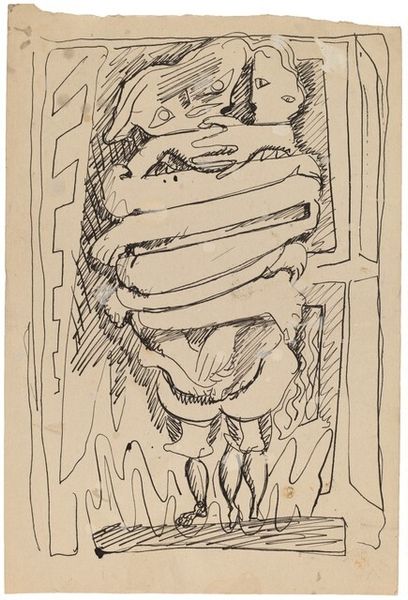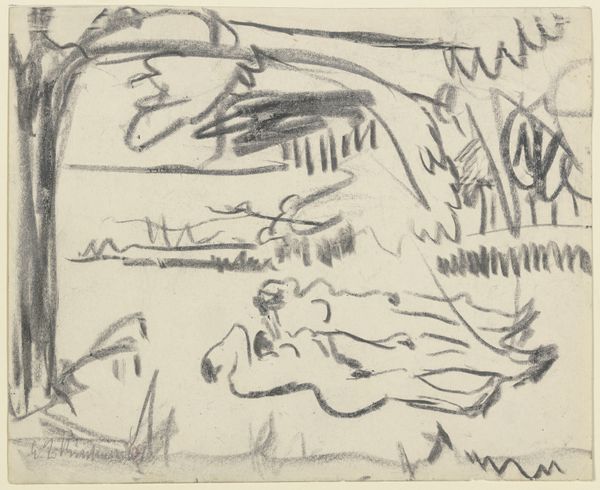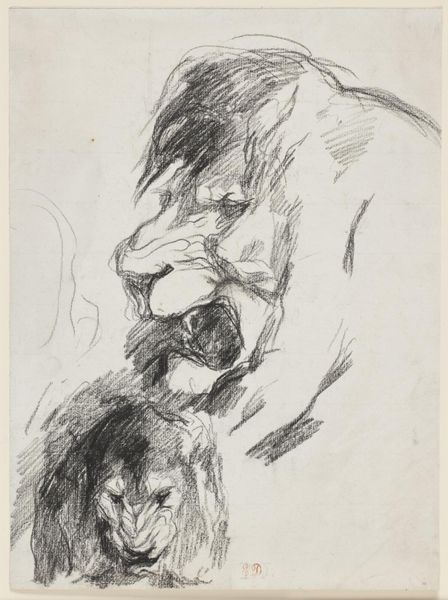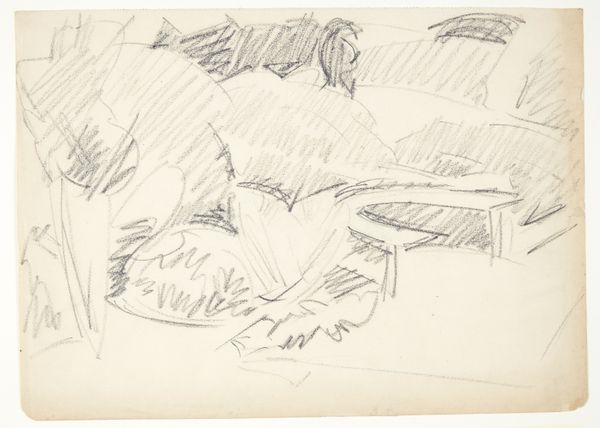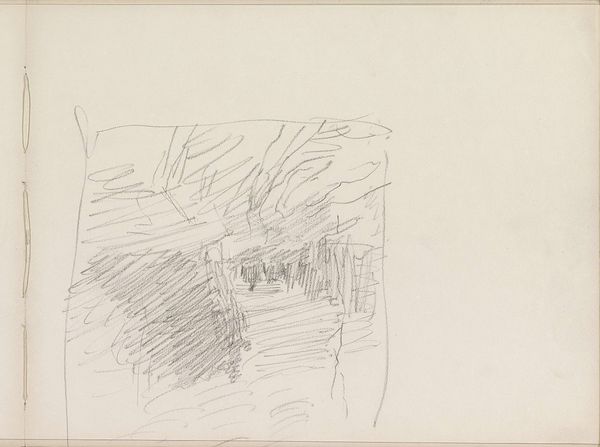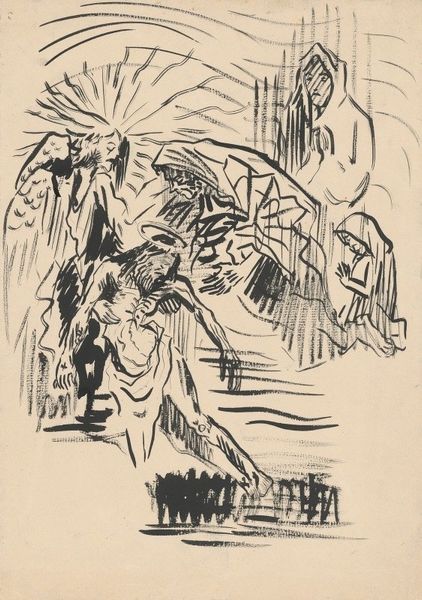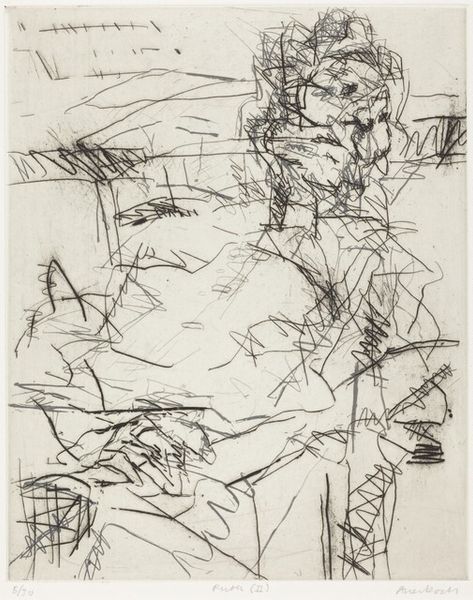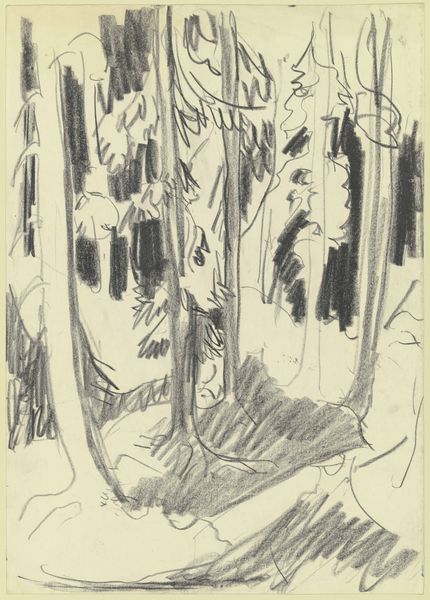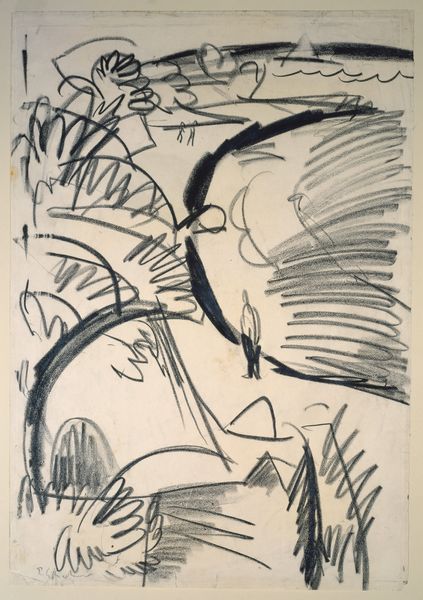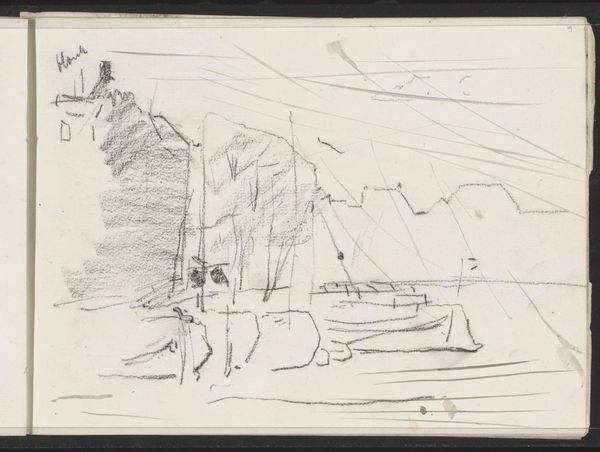
drawing, pencil
#
drawing
#
pen sketch
#
landscape
#
figuration
#
ink line art
#
personal sketchbook
#
linework heavy
#
ink drawing experimentation
#
pen-ink sketch
#
pencil
#
expressionism
#
thin linework
#
pen work
#
sketchbook drawing
#
nude
#
doodle art
Dimensions: overall: 46.4 x 38.9 cm (18 1/4 x 15 5/16 in.)
Copyright: National Gallery of Art: CC0 1.0
Curator: Looking at this 1913 work by Erich Heckel, simply titled "Three Figures," I am struck by the immediacy and almost raw energy of the lines. What’s your initial reaction? Editor: It feels like a stolen glance, a private moment observed rather than constructed. The setting is ambiguous but suggestive – figures amidst a chaotic yet organic background. It raises questions about vulnerability, spectatorship, and perhaps even the male gaze in early 20th-century art. Curator: Absolutely. What's fascinating is Heckel's choice of medium; the drawing, likely done with pencil or a similar material, highlights the preliminary stage of creation. You get the sense of direct engagement with the materials—the pressure applied to the paper, the quick, decisive marks. This resonates with the Die Brücke movement’s embrace of unmediated artistic expression. Editor: That focus on the immediate process brings an intimacy that resonates. Expressionism always offers us such insights into emotional turmoil—the tension in the figures and landscape mirroring inner states. The gendered perspective in his work certainly asks how he constructs and displays the female form. Curator: Well, the quick application speaks directly to its production – almost like we see this artist at work, using available supplies. Think of paper and readily available materials in times of political unease just before the First World War. This would factor in considering materiality as a primary source in interpreting artworks from that era. Editor: Certainly, the looming shadow of war must be considered. "Three Figures" perhaps speaks to the precariousness of human existence and reflects existential questions heightened by socio-political upheavals. Does this art resist complicity and does the unfinished sketch show labor on his and, metonymically, other people’s behalf? Curator: Exactly. And that immediacy, that raw aesthetic, rejects the bourgeois art establishment in favour of a more democratic artmaking process. It questions value by valuing expression. Editor: Ultimately, I see the artwork less as a celebration and more as an attempt to grasp what makes us human in an era threatening to dehumanize. Curator: Right, and that makes it continually relevant – this artwork asks about the intersection of people and things in an ongoing social negotiation. Editor: Indeed; the piece shows ways in which art confronts discomfort. It demands introspection and dialogue from us today.
Comments
No comments
Be the first to comment and join the conversation on the ultimate creative platform.

